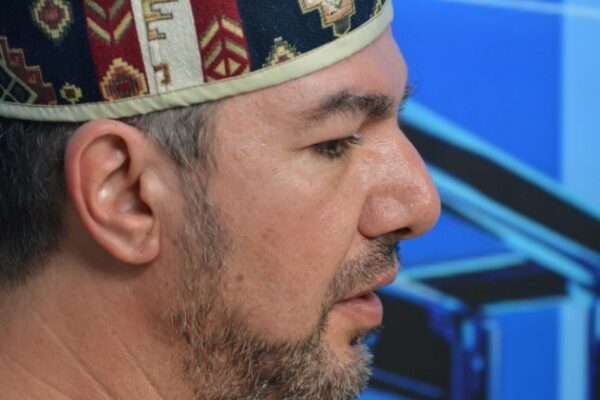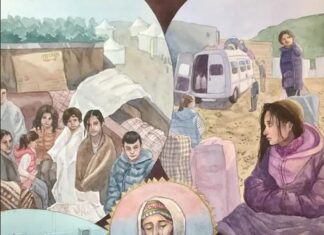YEREVAN/BUCHAREST — Theater and film actor, director, casting director, PhD lecturer, writer Florin Kevorkian was born in 1970 in Bucharest. He studied acting at Caragiale National University of Theatre and Film, where he is a lecturer now. In 1999, Kevorkian graduated from the High School of the University of Theater and Cinema in Bucharest, specializing in film directing and script writing. He is a casting director of about 20 films, actor in more than 15 and director of seven films. His acting credits include “The Shrunken City,” “Train of Life” (1998), “Amen” (2002), “The Wind of Change” (2013), “Pioneers’ Palace” (2015), “Hotel of the Damned” (2016), “A Study on Anxiety” (2016), “Lilith” (2019), “Adrenaline” (2022), etc. Florin Kevorkian has also published a novel (“My Love… Izabela”) and articles on theater.
Dear Florin, how did it happen that you went from being an actor to a casting director?
For me, this transition from actor to casting director happened in 1999 when I was invited by Mrs. Irina Charita — one of the great film directors and executive producer of two of the biggest film studios in the country, Castel Film and Media Pro Pictures — to be part of a new department organized in Buftea for the development of national and international cinematographic projects. The meeting with her was in the film “Train of Life” by Radu Mihaileanu, the film in which I debuted, along with many other casting directors from Romania, as assistant director, extra coordinator. It should be noted that in that film a new team of cinema makers was born in all fields of film production and direction: Tudor Giurgiu (well-known director, at the moment and director of two major film festivals, TIFF and GOPO), his casting assistant was Catalin Dordea (the current casting director of Cristian Mungiu’s films — one of the most successful directors in Romania and Europe), Cristian Mungiu (who was then assistant director), Marian Pascale (at that time, the producer’s driver, and now one of the biggest film producers in Romania). We were a young team and full of the desire to assert ourselves in a professional way and at a high level of cinematic culture. We were all in love with cinema and fervent art followers of the Romanian Cinematheque. We have all remained friends and good colleagues and have reunited on countless projects over the years, from then until now.
The next step was when, after two other training films, as a casting director, I dove in with an award-winning and world-acclaimed director, Costa Gavras, who won an Oscar for the film “Z.” On the film “Amen,” I went into the fire in an international casting with 125 characters of which 77 were Romanian actors, therefore, if we put a minimum of four proposals for each role, in my mind there were, at that moment, a number of 300 Romanian actors of all ages and bills. It was not for nothing that I had nightmares, with images of the Romanian actors who played in this film and in another 30 films for which I did the casting.
Then, I was lucky enough, also as a casting director, to work with Francis Ford Coppola, on the film “Youth Without Youth,” where I met again a wide variety of Romanian and European actors, including: Tim Roth, Bruno Ganz, Alexandra Maria Lara, Adrian Pintea, Dorina Lazar, Ana Maria Marinca. It was a joy to meet with “Lord of the Rings” make-up artist Jeremy Woodhead, along with Anahid Nazarian, the film’s script supervisor and executive producer.
If I would list all the European actors and all the personalities I met, I would answer only one question and I don’t want to leave out the others. The transition from actor to casting director is done naturally, out of love for actors and to give them what I would have liked to receive in the castings that I joined: attention, patience in searching and discovering the character, small defining details for the sequence at work, the patience to find the best double, the organization of the shooting space, objects for the actor, costumes, set and even the interpretation of the other character to look for the emotion. The casting action is not only “Choose, brother, you find the actor quickly, put the contract, that the project must go and that’s it!” Casting is, as Billy Wilder used to say, 85% of the value of a film.











